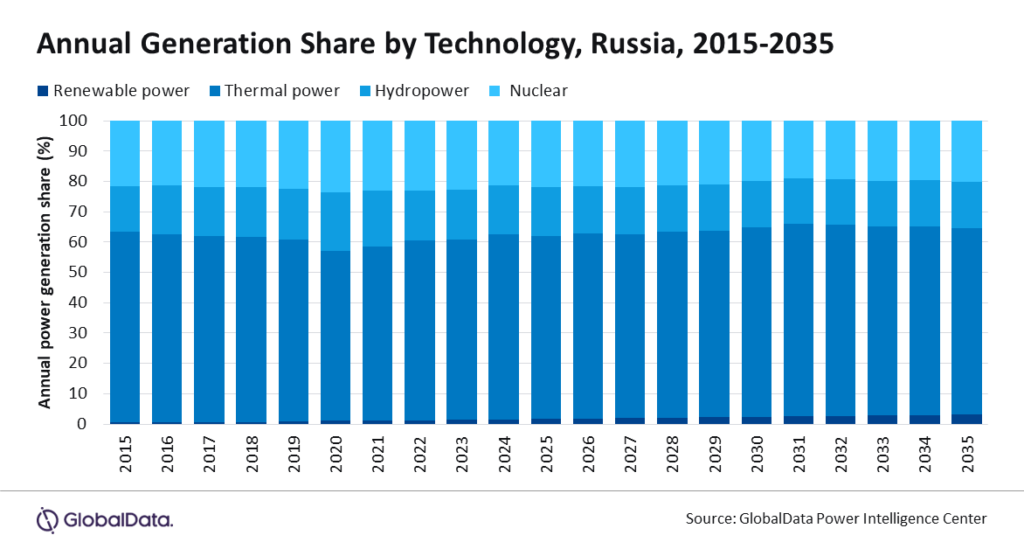GlobalData’s latest report, Russia Power Market Size, Trends, Regulations, Competitive Landscape and Forecast, 2024-2035, shows that thermal power was the dominant source of power in the country in 2023, accounting for around 67.7% of total installed capacity. Gas power capacity dominated the energy mix, contributing around 51.6% of the total installed capacity, while coal and oil accounted for around 15.1% and 1.1% respectively.
Due to the ongoing Russia-Ukraine war crisis, the development of renewable power in the Russian Federation has been affected. By 2035, power generation from renewable sources is estimated to account for only 3.2% of total generation.
Sudeshna Sarmah, Power Analyst at GlobalData, comments: “Considering the ongoing energy crisis around the world and various sanctions imposed on Russia, the country may look to utilise the excess oil and gas intended for exports domestically. There is a constant need for increasing energy efficiency and curb emissions and given the vast size of the power generation infrastructure, there exists a huge investment opportunity in this area.”
The installed thermal power capacity in Russia increased from 176.2GW in 2015 to 180.9GW in 2023, registering a compound annual growth rate (CAGR) of 0.3%. Within thermal sources, gas was the dominant technology, contributing around 76.1% of thermal capacity in 2023. Coal and oil contributed around 22.3% and 1.6%, respectively. By 2035, the cumulative thermal power capacity is expected to reach 190.1GW, recording a CAGR of 0.4% during 2023-35.
Annual generation from thermal power sources in Russia increased from 529.8TWh in 2015 to 552TWh in 2023, rising at a CAGR of 0.5% during 2015-23. In 2035, the annual generation from thermal sources is estimated to further rise to 672.7TWh, increasing at a CAGR of 1.7% between 2023 and 2035.
Sarmah concludes: “The most significant issue facing Russia’s thermal power industry is technological obsolescence. Nearly half of the thermal power plants were commissioned before the 1980s. The factories that supplied equipment to the thermal power plants were also based within the country. Equipment for the thermal power plants was sourced from local companies, these equipment suppliers did not undergo any modernisation, which means that most of the power plants in the country are functioning at low efficiency. Many are planned to be replaced by plants incorporating modern technology or will be refurbished in order to increase their generation efficiency.”
 Engineer News Network The ultimate online news and information resource for today’s engineer
Engineer News Network The ultimate online news and information resource for today’s engineer




